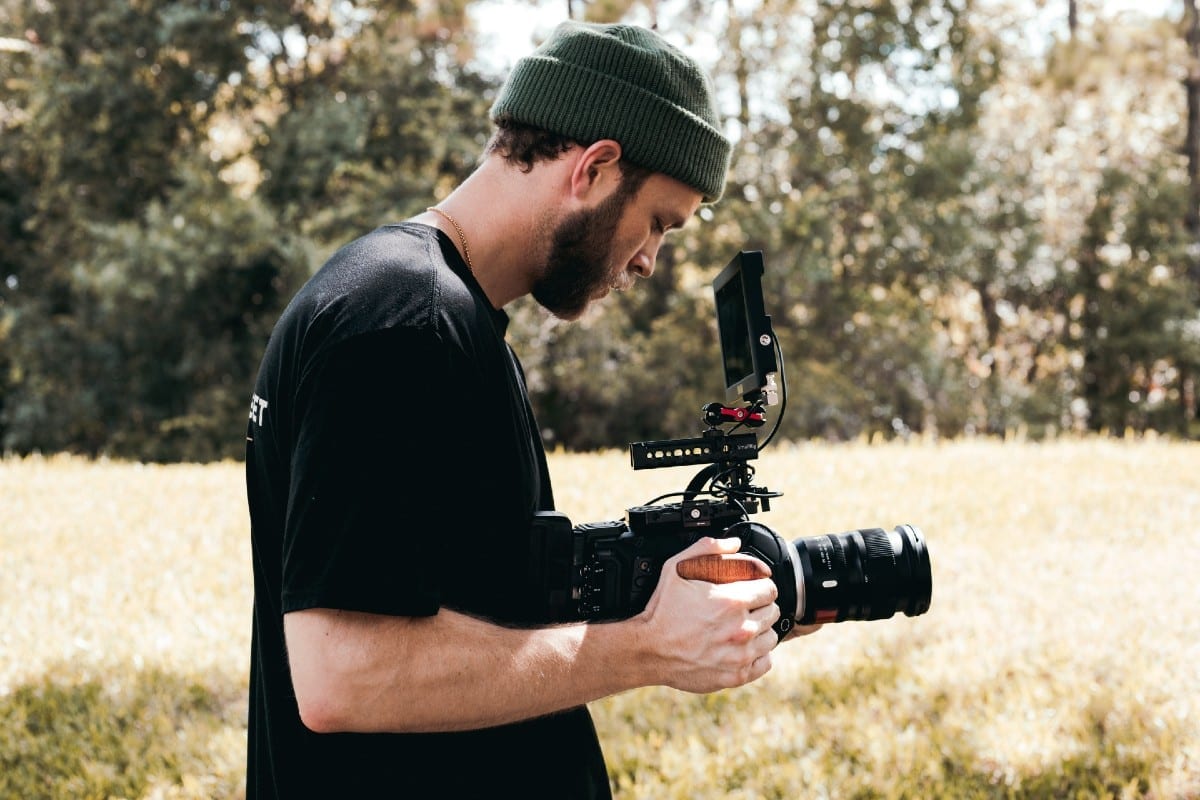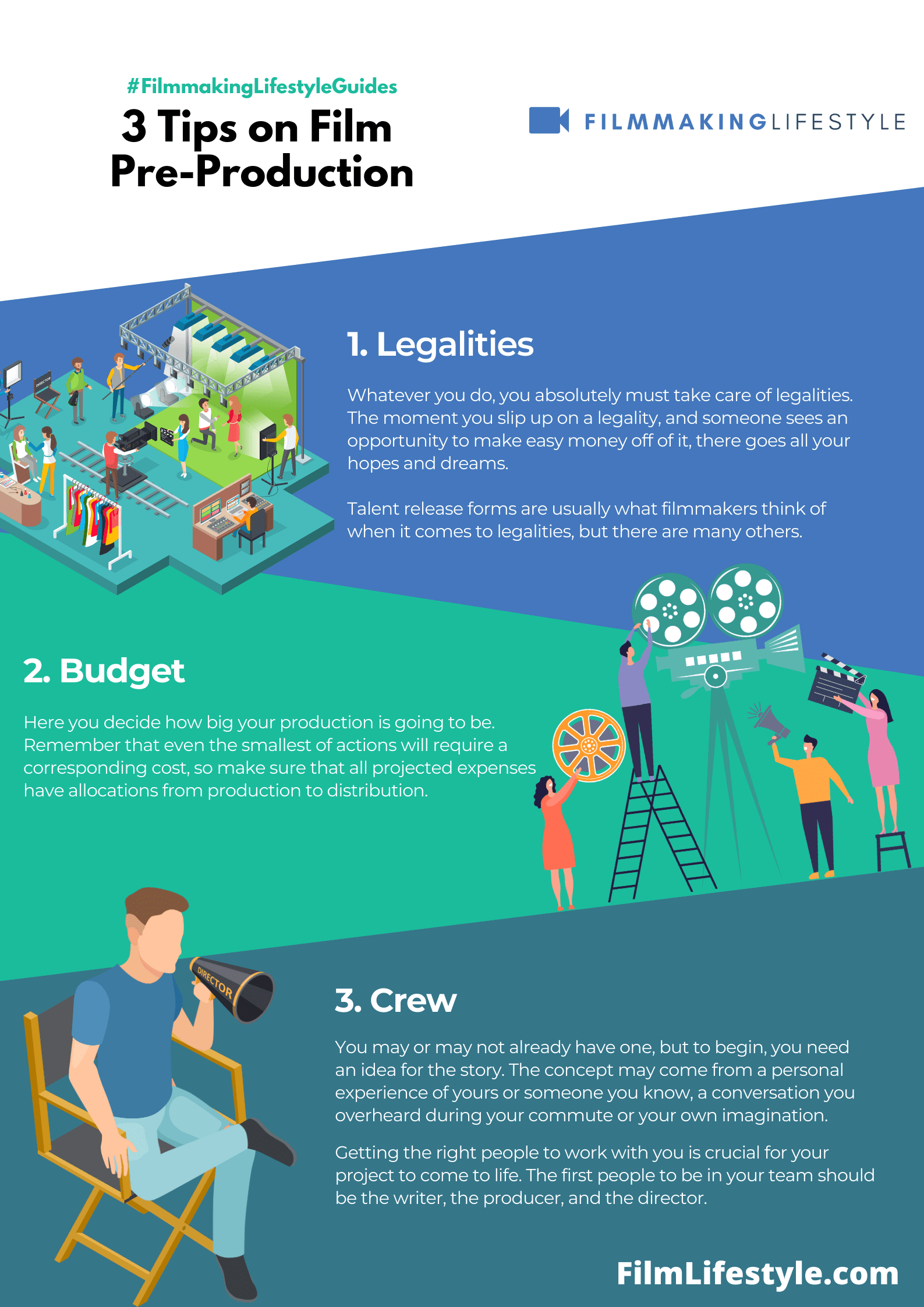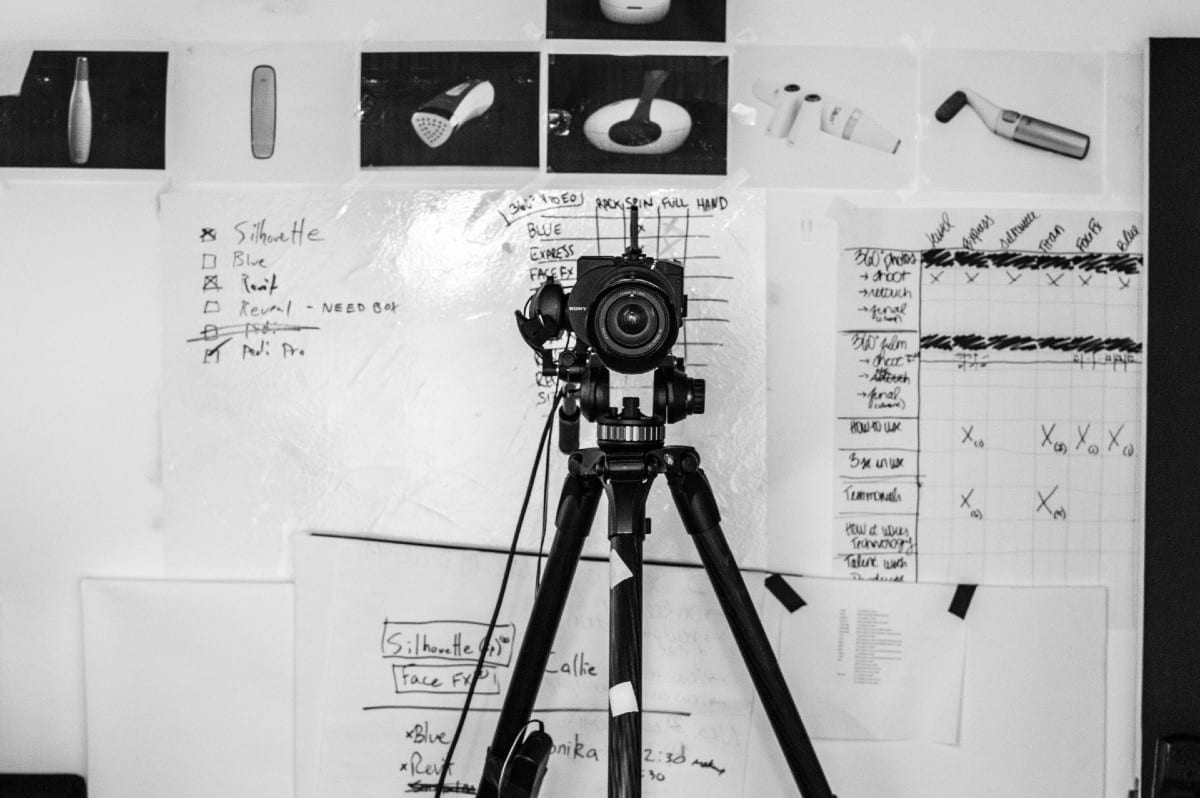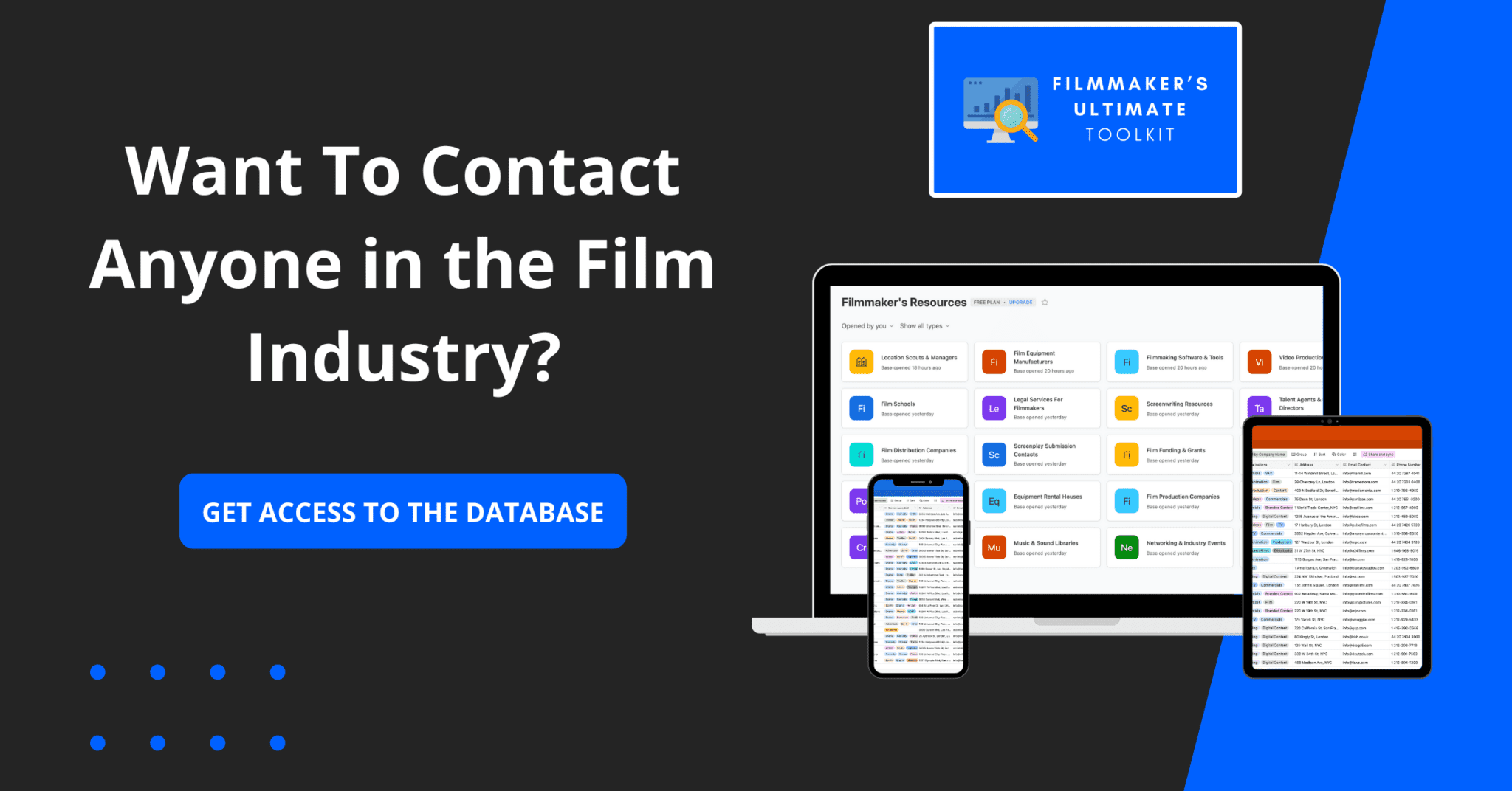Embarking on a film project is an exhilarating adventure, and it all starts with pre-production.
This crucial phase sets the tone for everything that follows, from the first script read-through to the final day on set.
We’ll dive deep into the essentials of pre-production, ensuring you’ve got a rock-solid foundation to bring your cinematic vision to life.
From budgeting and scheduling to casting and location scouting, we’ve got you covered with insider tips and strategies.
Stay with us as we unfold the ultimate guide to navigating the pre-production maze, guaranteeing your next film project hits the ground running with confidence and clarity.
Why Pre-production Is Crucial
Pre-production is the blueprint for a film’s success.
It involves crucial decisions that can make or break a project before the cameras even start rolling.
We understand that thorough planning during pre-production saves both time and money, which are invaluable resources in filmmaking.
Communication established in pre-production paves the way for a smoother production phase.
The foundations laid during this stage, such as clear-cut storyboarding and precise scheduling, ensure that every team member knows their role and the expectations.
Let’s dive deeper into the key elements of this phase:
- Script Breakdowns – We dissect every scene to anticipate needs such as props, special effects, and cast.
- Budget Allocation – We establish financial boundaries that will influence all subsequent decisions.
- Location Scouting – We select optimal shooting locations, which can drastically enhance the film’s aesthetics.
- Casting Calls – We choose the right actors to bring characters to life, as well as determine crew requirements.
By investing time in script read-throughs and rehearsals, we can avoid unforeseen issues.
This step allows for identifying and rectifying any inconsistencies or problems in the dialogue and scene transitions.
Without this, even the best-written screenplays like Pulp Fiction could falter in execution.
also, a finely tuned pre-production schedule maximizes daylight hours and syncs with actor availability.
In turn, this leads to fewer reschedules and unexpected overtime costs.
It also allows for seamless transitions between locations and setup changes, streamlining the entire production process.
As we dig into the specifics, we’ll explore how meticulous planning during pre-production contributes to a high-quality finished film.
It’s about shaping the raw vision into a practical roadmap, without which a film might never reach its full potential or even see the light of day.
Building A Strong Script And Story
In the realm of film pre-production, crafting a robust script and story is crucial.
It’s the very foundation upon which all other elements of the project will build.
A great script doesn’t appear overnight.
It often involves rewriting, feedback, and continuous refinement.
To ensure our script resonates with audiences, we focus on key components – – Character development: Creating relatable and dynamic characters.
- Plot structure: Establishing a coherent and engaging narrative.
- Dialogue: Writing natural and impactful conversations.
- Theme: Weaving a compelling theme that ties the story together.
We collaborate with seasoned scriptwriters who understand the intricacies of storytelling.
Their experience in scene structure and pacing transforms a good script into an exceptional one.
plus, we often Use script-reading tools and software.
These help us identify overused words and confusing sentence structures before they become issues on set.
Visual storytelling is just as important as written narrative.
We meticulously translate the script’s imagery into storyboard sequences.
This ensures that our vision for each scene aligns with the written word before we ever hit the production floor.
By dedicating significant time to script analysis, we avoid potential discrepancies during filming.
This step allows us to dissect each scene, ensuring every detail serves the storyline.
Remember, the script is where we communicate not just the story, but also our film’s heart and soul.
It’s a blueprint for emotional engagement, as much as it is for logistics.
Setting Up A Budget And Allocating Resources
Budgeting is a critical step in film pre-production, one that can make or break a project.
A clear understanding of the script and its needs allows us to allocate resources appropriately.
We focus on reconciling creative ambitions with financial realities, taking into account every possible cost from cast and crew salaries to location fees and post-production expenses.
Our budgeting process begins with a detailed script breakdown.
This involves identifying all the elements required to bring the script to life such as:
- Locations – where key scenes will be shot,
- Talent – actors who’ll bring characters to life,
- Props and Wardrobe – necessary items for authenticity on screen,
- Special Effects – both practical and digital enhancements.
We consider unforeseen expenses, setting aside a contingency fund to cover unexpected costs.
This cushion ensures that our production isn’t derailed by unexpected financial hiccups.
In our budgeting exercises, we prioritize expenses that have the greatest impact on screen, often making tough but necessary sacrifices in other areas.
Securing adequate funding is our next concern, and we explore multiple sources to do so.
Equity, loans, grants, and crowdfunding are all viable financing options.
What’s more, tax incentives and rebates from certain shooting locations can significantly stretch our budget.
Our aim is to strike the perfect balance between quality and cost-effectiveness.
We exhaustively analyze every expense line to ensure that each dollar spent is an investment towards our film’s success.
Without prudent financial planning, even the strongest script risks failing to materialize into the cinematic masterpiece it has the potential to be.
As we navigate this phase, transparency and regular communication with our investors and production team keep our financial trajectory clear and controlled.
Every spending decision is weighed against its contribution to the final product.
We work collectively to ensure that each choice aligns with our vision and available resources.
Assembling The Dream Team: Crew And Cast
After securing the funding and meticulously planning our budget, we turn our focus to one of the most critical pre-production steps – assembling our dream team.
This includes our crew and cast, whose talents and abilities will bring the screenplay to life.
The crew is the backbone of our production, and we aim to hire professionals with both the skill set and the passion to match our project’s needs.
From the director of photography to the sound mixer, each member plays a pivotal role in the creation of the film.
We carefully evaluate candidates based not only on their experience and portfolio but also on their ability to collaborate effectively within our established team dynamic.
Choosing the right cast is just as essential as selecting the crew.
We’re looking for actors who not merely fit the characters on page but also bring a unique depth to the roles.
Their performances are crucial to connecting with our audience on an emotional level.
Our production’s success hinges on excellent communication and a shared vision among all team members.
We ensure that everyone is on the same page from the start, fostering an environment of mutual respect and creativity.
Below are key roles that form the core of our crew:
- Director: The creative leader who shapes the vision of the film.
- Director of Photography: In charge of capturing that vision on camera.
- Production Designer: Creates the visual universe where our story unfolds.
- Costume Designer: Defines the characters through their costumes.
- Editor: Skilled at piecing together the film’s narrative in post-production.
Maintaining a balanced and harmonious team atmosphere allows us to solve challenges swiftly and stay on schedule.
By choosing the right people for the job, we’re setting ourselves up for a smoother production process and eventually, a film that resonates with audiences.
Scouting For The Perfect Locations
Location scouting is vital to the authenticity and aesthetic of any film.
It involves not only finding a place that resonates with the story but also one that’s logistically viable.
A great location adds depth to the narrative and becomes a character in its own right.
Consider how the grimy alleyways of Gotham lend Batman its brooding atmosphere or how the sun-drenched beaches of Amity Island set the stage in Jaws.
We look for spots that suit the script’s demands and enhance the production value.
We consider aspects such as lighting conditions, space for equipment, and the ease of obtaining permits.
The right setting can simplify production or make it exceedingly complex.
We balance visual appeal with practical necessities, ensuring that the location supports our creative vision without hampering the filming process.
We prioritize locations that tell a story.
Spaces that carry echoes of history, culture, and emotion bolster our film’s narrative and draw viewers deeper into the world we’re creating.
Our team often creates a shortlist of potential locations –
- Evaluating each for visual suitability,
- Assessing logistical considerations,
- Checking for sound pollution and other potential disruptions.
We involve key department heads in the decision-making process to ensure that each location aligns with their needs.
Our cinematographer looks for light, the sound team listens for quiet, and the production designer searches for authenticity.
Securing locations is a delicate negotiation, balancing costs against benefits.
We value relationships with location owners and understand their concerns, offering assurance that we’ll respect their property and leave everything as we found it.
Engaging local authorities early is key to smooth operations.
They provide valuable information on restrictions, the best times to shoot, and any cultural sensitivities we should be aware of.
Crafting A Schedule And Creating A Shot List
After securing the ideal locations for our film, it’s essential to focus on the overall blueprint for production – crafting a detailed schedule.
This calendar not only sets the groundwork for daily shoots but also serves as a critical tool for managing time efficiently across departments.
Creating a shot list transitions our vision from text to visual cues, picturing each angle and movement required to bring scenes to life.
We prioritize this step as it ensures that every team member is on the same page and prepared for what needs to be captured.
Here are some key components we include in our shot lists:
- The scene number and set-up,
- A brief description of the action or dialogue,
- The type of shot (e.g., close-up, wide shot),
- Camera movements and angles,
- Any special equipment needed for the shot.
A meticulous shot list also directly influences our daily schedule, detailing precisely how much time we need for each set-up.
We consider various factors – the complexity of shots, actor availability, and the lighting needed to achieve the right look.
Cross-departmental coordination becomes more manageable with a robust schedule and shot list guiding us.
We establish critical touchpoints between directors, cinematographers, and other creative leads to refine these documents until they’re succinct and actionable.
Finally, we factor in potential delays and build a bit of flexibility into our schedule.
Things like weather conditions and unexpected challenges often arise, and it’s our job to anticipate and plan for these contingencies.
This proactive approach helps us maintain momentum and keep the production moving forward without compromising our creative vision.
Organizing Production Meetings And Rehearsals
Organizing effective production meetings is pivotal for a streamlined pre-production process.
These meetings bring together the director, department heads, and other key personnel to align the film’s vision and iron out any potential issues.
It’s during these discussions that each department can voice their needs and concerns – whether it’s about wardrobe requirements in The Great Gatsby or the intricate set constructions needed for Inception.
Production meetings are not just about problem-solving but also about team building.
The cohesion of the team attributes significantly to the overall efficiency and atmosphere on set.
Rehearsals, on the other hand, provide actors with the time to jump into their characters and develop a chemistry that translates on screen.
These practice sessions can uncover subtleties in performances that can greatly enhance a scene’s impact.
plus to the cast, technical rehearsals are essential for the crew.
These run-throughs ensure that all the planned shots are executable and that the technical departments are prepared for the actual takes.
Here are some aspects that must be addressed during these rehearsals:
- Location accessibility,
- Lighting setups,
- Audio challenges,
- Camera movement precision.
We’re well aware that time is a luxury in filmmaking.
hence, scheduling rehearsals with a focus on complex scenes or sequences that require significant coordination is crucial.
By prioritizing these, we maximize our resources and time.
With a detailed agenda and clear objectives, both production meetings and rehearsals lead to a smooth transition into the principal photography phase.
Monitoring progress and making adjustments are ongoing processes.
As pre-production advances, our production meetings and rehearsals adapt to the evolving dynamics of the project.
With each meeting, clarity improves, and with every rehearsal, confidence in our preparedness grows.
Securing Permits And Clearances
While organizing production meetings and rehearsing scenes are foundational, securing the necessary permits and clearances is equally critical to the film pre-production process.
Without these, even the most meticulously planned shoots can face costly setbacks.
Permits are required to shoot on public and, sometimes, private property.
This rule applies no matter the scope of the project, from indie films to big-budget blockbusters like Inception.
also, the type of permit needed can vary significantly from one location to another, and oftentimes involves a fee and proof of insurance.
Clearances, on the other hand, involve the legal right to use copyrighted materials, locations, or even certain types of equipment.
Did you know that films like The Social Network had to secure rights to use various brand names and logos that appear throughout the film?
To simplify the securing of permits and clearances, here’s a checklist to consider:
- Identify all the locations and determine the type of permit required for each,
- Check the lead time for permit approval – it can range from days to months,
- Obtain comprehensive insurance that satisfies the location’s requirements,
- Research and request clearances for copyrighted materials well in advance.
We typically recommend starting the permits and clearances process as early as possible in pre-production.
Unexpected delays and negotiations can extend the time it takes to get approvals.
By addressing these elements early on, we ensure our production schedule remains on track.
Handling permits and clearances can be a complex task, varying widely depending on the production’s size and the locations involved.
It’s crucial to allocate adequate resources to this effort to prevent legal issues and adhere to all regulatory requirements.
This attention to detail often differentiates a smooth production from one plagued by preventable hurdles.
Designing Sets, Costumes, And Props
Creating the physical world of a film is as essential as the script itself.
The design elements provide the visual context that supports storytelling.
We focus on every detail, understanding that the sets, costumes, and props are integral to the characters and their journey.
Our designers work closely with the director to achieve a cohesive look that serves the narrative.
In The Grand Budapest Hotel, the meticulously crafted sets complemented the whimsical narrative.
Set designs ranged from a lavish hotel to a high-speed chase on a toboggan.
For costumes, we consider both period accuracy and character development.
They can enhance the persona or signal a transformation, like the suits in The Great Gatsby.
Props are not just objects; they carry symbolic weight or serve as pivotal elements within the plot.
The sled in Citizen Kane is a prime example of a prop with deep thematic resonance.
We compile comprehensive lists for each of these elements –
- Detailed set diagrams and mood boards,
- Costume sketches and fabric swatches,
- Prop lists with specific descriptions and sources.
These lists allow us to ensure nothing is overlooked and help maintain consistency across different scenes.
They also aid in budgeting and can be vital when coordinating with specialized craftsmen or suppliers.
Crafting these components requires early collaboration and planning.
We begin this creative process in the pre-production stage to allow ample time for research, design, and construction.
Our production designers and artisans transform concepts into tangible environments.
They balance artistic vision with the practicalities of filmmaking.
Pre-production is our opportunity to bring the script’s environment to life authentically.
From the grandiose to the everyday, every element of the set and costume design enhances the storytelling.
Preparing For Post-production
While immersing ourselves in the present moment of pre-production, it’s vital we keep an eye towards post-production.
This foresight informs decisions that can significantly reduce headaches during the edit.
By envisioning the end result, we ensure footage is captured with editing in mind – from the technical specifications to the emotional resonance.
Beyond the immediate scope of the set, costume, and prop design, we must consider the technical aspects of post-production.
That means sticking to file formats and codecs that are compatible with our chosen editing software.
Efficiency is
By now, the importance of sound design is clear – it’s the invisible force that brings our visuals to life.
Ensuring high-quality sound capture means less time and money spent on ADR (Automated Dialogue Replacement) later on.
Our goal is to prioritize clean audio on set to ease the post-production process.
Visual effects (VFX) present another critical factor we address early on.
By planning for VFX requirements during pre-production, we avoid costly reshoots and labor-intensive fixes after principal photography.
This means detailed storyboarding and pre-visualization of sequences that involve VFX, working in tandem with VFX supervisors from the get-go.
Here are some key elements we include in our post-production checklist:
- Offsite backup plans for all footage,
- Clear labeling systems for footage and audio,
- VFX shot lists with detailed specifications,
- Alignment with the colorist on the desired look of the film The Director’s input during pre-production can make or break the editing phase. Their vision guides us to gather the necessary footage and to plan for transitions, overlays, and narrative pacing that stay true to the story. It’s not just what we capture on camera, but how those moments are meant to weave together in post-production.
Transitioning smoothly from production to post requires that we have a dialog with our post-production team throughout the filmmaking process.
Open lines of communication ensure that everyone remains on the same page, and any potential issues can be identified and resolved early.
This collaboration ensures the integrity of the creative vision from start to finish.
Ultimate Guide To Film Pre Production – Wrap Up
We’ve journeyed through the critical stages of film pre-production, underscoring the profound influence of meticulous planning and collaboration.
Our exploration has shown that the magic of cinema begins long before the cameras roll, with every set piece, costume, and prop playing a pivotal role in storytelling.
By incorporating the insights of post-production early on, we ensure a seamless creative process that honors our vision.
Let’s carry these lessons forward, recognizing that the foundation we lay in pre-production sets the stage for a truly captivating film experience.
Frequently Asked Questions
Why Is Pre-production Important In Film Projects?
Pre-production is vital as it involves planning and collaboration to create a cohesive look that supports the narrative, ensuring every set, costume, and prop contributes meaningfully to the storytelling.
How Do Sets And Costumes Impact A Film?
Well-designed sets and costumes have a significant impact on a film by providing authenticity to the script’s environment and enhancing the visual storytelling, as seen in films like “The Grand Budapest Hotel” and “The Great Gatsby.
“
What Should Be Included In Pre-production Design Element Lists?
Comprehensive lists should include every set piece, prop, and costume detail to prevent oversights, assist in budgeting, and facilitate coordination throughout the production process.
How Does Pre-production Planning Affect Post-production?
Pre-production planning should consider post-production requirements, such as file formats and sound design, to ensure a seamless transition and uphold the creative vision through the final stages of film production.
Why Is Collaboration Between Pre-production And Post-production Teams Crucial?
Collaboration between teams ensures that technical aspects are addressed early on, which helps in maintaining the integrity of the creative vision and enables a smooth workflow from production to the release of the film.










